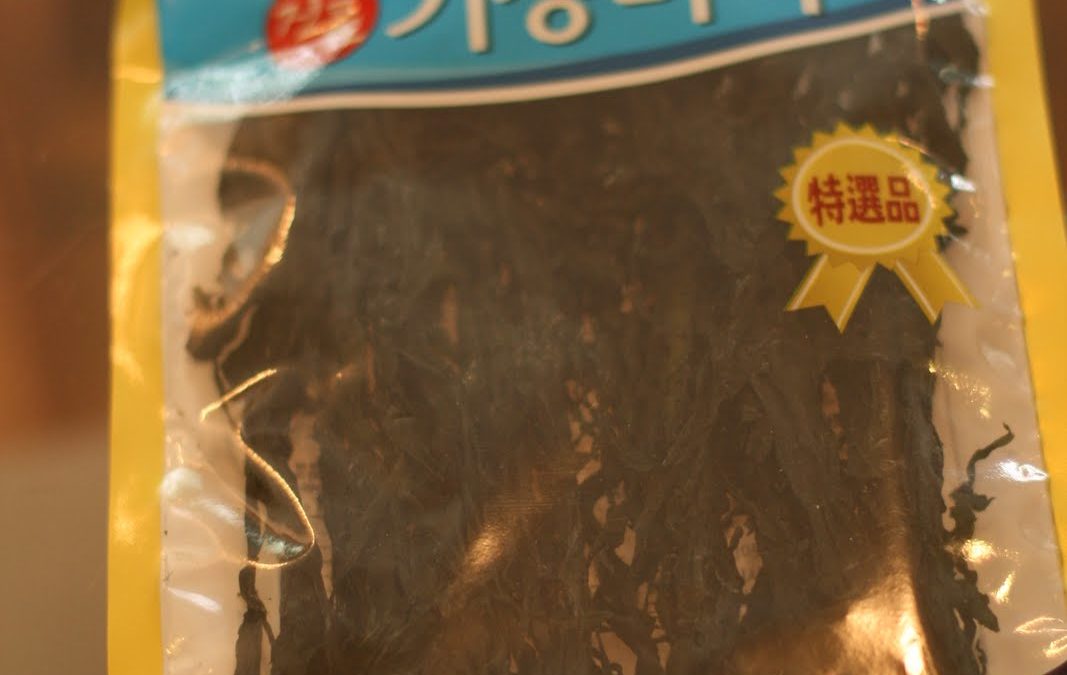I wrote about seaweed soup already, for New Years, but I didn’t give you a recipe. This isn’t going to be an exact recipe either, but you will be able to make a delicious seaweed soup after you read this!
As Grandmaster Tae Yun Kim always tells us, seaweed soup has a big place in the Korean culture. It is the food every new mother receives after childbirth, to cleanse their system. It has great nutritional value, and it also happens to taste really really good, when it’s done right. I am not going to tell you this version is traditional, or the only way. No, I learned this version from Grandmaster Tae Yun Kim, and that is how I make it.
Plus, it’s naturally gluten free, which is a big plus for me.
There are countless different kinds of seaweed available and not all are for soup. I used to always ask the people in the Korean store to help me get seaweed for soup, and with a big smile they always did. Here is what a package might look like:

(This is not my own picture, it is from this blog: http://weekofmenus.blogspot.com/2010/04/korean-seaweed-soup-for-love-of-my.html)
Before you start, you will need to soak the seaweed in plenty of water. If you are in a hurry, soak it in warm water. Make sure you use a big container and lots of water, it will absorb a lot!
Take a big pot, and put in some sesame oil, to cover the bottom of the pot. Saute some chopped garlic – I use a lot! – and some finely cut good quality beef. Squeeze out the seaweed really really well, and sautee with the garlic and beef, stirring often.
Season well with black pepper and anchovy sauce – make sure you get the kind that is made from only dried anchovies and salt, no msg added. Keep sauteeing until really dry, then add water. Add a lot, the seaweed will still expand.
Best is, use some oxtail soup, or beef bone broth, if you have it, instead of the water. It will still be superb with just water, but it will be stellar using beef broth of some sort.
Let this boil for a long time, but at least half hour. I like to let it simmer all day. You can add any kind of mushrooms to this, and some Korean radish, the big, white kind. Add in the beginning and let boil.
Just before serving, add some chopped green onions, and season to taste, which, to me, means adding more anchovy salt and pepper, perhaps salt if really needed.
I never measure quantities, so if you are totally new to cooking, especially Korean cooking, keep to the directions on the package – if they are all in Korean, ask at your store.
This is really good with some steaming fresh rice, and a nice variety of Korean side dishes. Enjoy!



Recent Comments